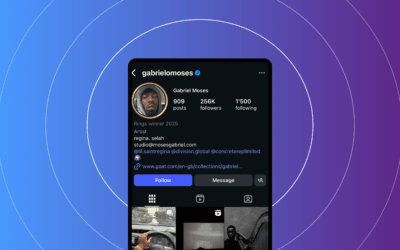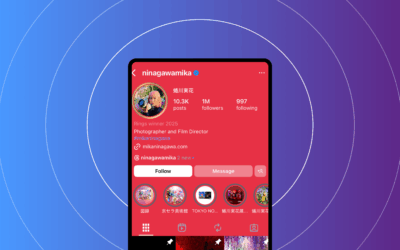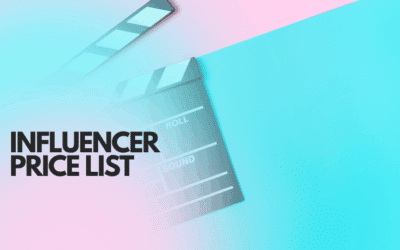Video Game Influencer Marketing
Key takeaways
- Start with clear objectives, KPIs, and audience-platform fit.
- Build a repeatable creator vetting and fraud-check workflow.
- Use UTMs, promo codes, and holdouts to prove ROI.
- Video game influencer marketing turns discovery into installs.
Introduction
Video game influencer marketing is essential for publishers, indies, and brands that want authentic exposure with players. This guide shows how to plan a video game influencer marketing campaign, measure ROI, and decide between in‑house teams and external video game influencer marketing services. Think of it as your 2025 playbook, from strategy to reporting.
Definition: the strategic use of streamers, YouTubers, creators, esports personalities, and brand advocates to drive awareness, consideration, and conversion for games or gaming-related products.
What you’ll learn:
- Campaign design from objectives to creator briefs.
- KPIs and benchmarks you can actually track.
- Platform formats that convert and why.
- Budgeting, services vs in‑house, and measurement frameworks.
Video Game Influencer Marketing: What It Is and Why It Matters
Video game influencer marketing pairs the right creators with the right audiences to drive outcomes across the funnel. The approach spans live streams, long‑form videos, shorts, and community activations that move players from awareness to installs and ongoing engagement.
Creator types and where they shine
- Streamers (Twitch/YouTube Live): Long-form, real-time engagement. Great for first looks, launch-day streams, live demos, and community-driven events.
- VOD creators (YouTube): Evergreen discovery. Reviews, in-depth breakdowns, guides, and narrative explainers that keep delivering months after launch.
- Short-form creators (TikTok, YouTube Shorts, Instagram Reels): Rapid virality. Highlight clips, challenges, and trend-driven content that spreads fast.
- Esports personalities and pro players: Competitive credibility. Event activations, team or jersey integrations, and high-skill showcases for PvP titles.
- Micro/nano-influencers (community leaders, Discord mods, modders): Deep trust. Niche genres, indie titles, and grassroots communities.
Creator attribution and where to find the right partners
- Micro/nano-influencers (community leaders, Discord mods, modders): Deep trust. Niche genres, indie titles, and grassroots communities. See What is a Micro Influencer?
Channel overview—what each does best
- Twitch: Live engagement, sponsored streams, co-streams, and drops.
- YouTube: Reviews, walkthroughs, trailers, and evergreen tutorials.
- TikTok: Short, visual, trend-friendly clips and creator challenges.
- Instagram: Reels for visuals; Stories for quick CTAs and swipe-ups.
- Discord: Owned community, retention, events, and feedback loops.
- Reddit: Organic community testing, AMAs, and community-first insights.
Why it matters in 2025
Player attention is fragmented, and creators are the discovery layer for games. Live experiences feel like events at launch. Short-form content accelerates reach. Across the industry, credibility and community drive players to wishlist, pre-order, download, and keep playing.
| Channel | Reach | Engagement | Costs | Best formats |
|---|---|---|---|---|
| Twitch | Moderate | Very high | Higher CPMs for live | Sponsored streams, co-streams, drops |
| YouTube | High | High evergreen value | Mid-to-high CPMs | Reviews, walkthroughs, guides |
| TikTok | Very high | Broad reach, viral potential | Competitive CPMs | Clips, challenges |
| Discord | Low | Very high retention | Low media cost | Community events, updates |
When to use which format
- Sponsored streams for launches, demos, and event windows.
- YouTube reviews and guides for sustained discovery after launch.
- TikTok/Shorts for virality and social proof.
- Discord events for retention, updates, and community health checks.
Use these building blocks to design a video game influencer marketing campaign that fits the title, platform, and launch window.
The 2025 Landscape: The Video Game Industry and Influencer Marketing
The global games market remains large and resilient, driven by live services, mobile growth, and creator ecosystems. Newzoo’s analyses show sustained growth and live experiences shaping player time and attention. See the Newzoo insights hub for market sizing and trends (accessed September 2025).
Platform trends come from Statista’s gaming overview, aggregating reach for Twitch, YouTube, and TikTok in gaming contexts (accessed September 2025).
On the marketing side, influencer investment continues to scale. The Influencer Marketing Hub Benchmark Report tracks spend growth, average rates, and performance benchmarks you can use to set expectations (accessed September 2025).
Ad budgets shift toward creator content and gaming environments; Insider Intelligence covers the digital video and creator-led media mix (accessed September 2025).
Trust is the currency. Nielsen’s research shows recommendations from people audiences know beat traditional ads, explaining why creator endorsements and reviews perform well for games (accessed September 2025).
Regulatory context matters. In the U.S., creators must disclose sponsorships clearly. Review the FTC Endorsement Guides for compliance workflows (accessed September 2025). Platforms also have paid-promotion rules—YouTube, TikTok, Twitch—and guidelines for sponsored content (accessed September 2025).
Communities are your retention engine. Discord servers and subreddit threads extend life after launch with patch notes, tournaments, and dev AMAs.
How to Design a Video Game Influencer Marketing Campaign
Objectives, KPIs, and success metrics
Start with one primary objective. Then lock your KPIs and measurement plan before you contact creators.
- Awareness: reach (unique viewers), impressions, CPM.
- Consideration: watch time, view-through rate, engagement rate.
- Acquisition: clicks, CTR, tracked installs, promo-code redemptions.
- Retention/LTV: DAU/MAU lift, day-7/30 retention, ARPU change.
Useful formulas:
- Engagement rate = ((likes + comments + shares) / views or followers) × 100.
- CTR = (clicks / impressions) × 100.
- Conversion rate = (conversions / clicks) × 100.
Suggested KPI targets: align with the Influencer Marketing Hub benchmarks (see above sources) for ranges. Bake targets into creator briefs and contracts so success is clear for your video game influencer marketing campaign.
Audience research and alignment
- Casual/mobile players: short sessions, monetization via IAPs, social-first discovery.
- Core/PC players: long sessions, deep systems, active on Twitch/Reddit.
- Console/AAA players: cinematic preference, value reviews and performance breakdowns.
- Competitive/esports audience: skill-focused, follows teams and pro influencers.
- Stream-first audiences: want live play, Q&A, and personality-driven content.
Segment-to-platform mapping:
- Twitch: core/PC, competitive, stream-first.
- YouTube VOD: console/AAA, core/PC, research-minded shoppers.
- TikTok/Shorts: casual/mobile, broad awareness, younger demos.
- Discord/Reddit: all segments for retention, updates, and community health.
Persona template (keep it simple): age range; platform (PC/console/mobile); weekly playtime; favorite genres; top creators followed; purchase triggers (friend recommendations, reviews, discounts, in-game cosmetics).
Tools for insights: platform analytics (YouTube Analytics, TikTok Insights), TwitchTracker for live metrics, and Statista’s gaming trends hub for broader context (sources cited above). This alignment ensures your strategy speaks to the right players.
Influencer selection criteria
Evaluate creators with a consistent checklist:
- Audience overlap: request anonymized audience demographics and top countries.
- Content quality: consistent thumbnails, clear audio, on-brand tone, reliable upload/stream schedule.
- Authenticity and past sponsorship performance: request case studies and prior campaign screenshots.
- Fraud checks: look for healthy view-to-follower ratios, natural comment velocity, and geography alignment.
- Contractual fit: confirm exclusivity windows, usage rights, and deliverables.
Signals of authenticity: strong average watch times, active live chat, and repeat viewership. Vet with third‑party tools as needed—SocialBlade for growth trends, HypeAuditor for audience quality, and TwitchTracker for live metrics. For a structured creator vetting checklist, see How to Find Influencers for Your Brand.
Messaging, creative guidelines, and legal/compliance
Your creative brief should be decisive, not restrictive. Include:
- Objective and target audience.
- Key messages and value props; must-say and must-not-say lines.
- Assets: key art, trailer, creator codes, early build access.
- Required CTAs: wishlist, pre-order, install link, or join Discord.
- Disclosure language: exact hashtags or on-stream verbal copy.
- Usage rights: how, where, and for how long you’ll repurpose content.
- Exclusivity window and conflicts.
- Timeline, milestones, and review process.
Compliance essentials: follow the FTC’s disclosure rules; use platform-paid-promotion tools per YouTube/TikTok/Twitch. If you repurpose UGC, request worldwide, perpetual, sublicensable rights and capture rights in the contract. See Influencer Marketing Agreement Template.
Activation channels and formats
Formats that match goals and platforms:
- Sponsored streams/co-streams: launch day, AMA segments, dev Q&As, play-alongs.
- Reviews/walkthroughs: deep-dive YouTube VOD with chapters.
- Short-form challenges: TikTok/Shorts clips and mechanics demos.
- Live commerce and drops: limited-time item codes or cosmetics to create urgency.
- Affiliate codes and deep links: per-creator tracking for installs or purchases.
- Community activations: Discord tournaments, mod showcases, patch-note watch parties.
Creative specs (guidelines, not rules): 1080p minimum; short-form 9–15 seconds or 20–35 seconds; live overlays with sponsor disclosure; CTAs in the first third of captions or a verbal cue in-stream.
Budgeting and compensation models
Choose the model that fits your objective and risk profile. See the table below for a quick compare of common models.
| Model | When to use | Example | Pros | Cons |
|---|---|---|---|---|
| Flat fee | Sponsored streams, dedicated videos with guaranteed coverage | 100k views, live CPM proxy $20 → ≈$2,000 | Predictable cost | Content upside may be limited if viral |
| Performance-based (affiliate/rev share) | Free-to-play installs or bundles | $3–$10 per install | Shared risk; strong upside | May require minimums; revenue share complexity |
| Hybrid | Most launch programs | Base fee + tiered bonuses | Balanced risk and upside | More complex to manage |
| Product seeding | Micro-creators; indie budgets | Free keys + small stipend | Low upfront cost; authentic content | Scale and reach may be limited |
| Equity/long-term partnership | Ongoing franchises; co-development | Milestone payments + revenue share | Strong alignment; durable relationships | Long-term commitment; complexity of valuation |
Budget allocation rule of thumb:
40% awareness (top creators and tentpole moments),
40% activation (mid-tier creators, short-form, affiliate boosts),
20% measurement/contingency (tracking, paid amplification, experiments).
For templates and pricing ideas, see the Influencer Marketing Agreement Template and Influencer price list (linked above).
Calendar, launch sequencing, and cross-promotions
Example 8‑week launch timeline:
- Week 1: Teaser clips, creator briefings, embargo schedules locked.
- Week 2: Early access streams; Discord AMA with devs.
- Week 3: Trailer push; short-form challenge kickoff.
- Week 4 (Launch): Sponsored streams, co-streams, drops live; paid boosts.
- Week 5: YouTube reviews/guides; highlight reels on social.
- Week 6: Community tournament; patch-note watch party.
- Week 7: Retention content (advanced guides, speedrun features).
- Week 8: Postmortem, case study, retargeting of best-performing creatives.
Cross-promote: compile highlight reels, clip repurposing across paid social, and newsletter calls. Set a cadence creators can sustain—weekly touchpoints early, then biweekly for retention.
Signals of authenticity: strong average watch times, active live chat, and repeat viewership across uploads. Vet with third‑party tools as needed—SocialBlade for growth trends, HypeAuditor for audience quality, and TwitchTracker for live metrics. See a structured checklist here: How to Find Influencers for Your Brand.
Video Game Influencer Marketing Services: In‑House vs Agencies
Definition: video game influencer marketing services manage ideation, creator sourcing, contract negotiation, content production, campaign activation, compliance, and measurement—delivered by agencies, talent platforms, or managed service providers.
In-house pros/cons
- Pros: tighter brand control; direct creator relationships; lower long-term fees.
- Cons: slower ramp; hiring/training needed; limited early network leverage.
Agencies/services pros/cons
- Pros: faster launch; deep creator networks; turnkey creative and compliance support.
- Cons: higher costs; potential bandwidth conflicts; variable transparency.
How to evaluate partners (scoring checklist)
- Proven gaming experience and case studies.
- Creator relationships and category coverage (PC/console/mobile/esports).
- Measurement and reporting stack (UTMs, by-creator dashboards, incrementality).
- Fraud detection (toolset, process).
- Legal/compliance rigor (FTC, platform rules).
- Operations SLAs (briefing, revisions, approvals, escalation paths).
RFP questions you can paste:
- “Share three gaming case studies with KPIs, budgets, and lessons learned.”
- “List the top 50 creators you have active relationships with in [genre].”
- “Provide a sample contract showing disclosure language, usage rights, and data-sharing.”
- “Explain your fraud and view authenticity checks and tools.”
- “Show a sample dashboard with by-creator eCPI/eCPA and retention.”
Best Practices, Governance, and Risk Management
Governance checklist (pre‑to‑post campaign)
- Pre-campaign: vet creators for fraud; request audience demos and prior campaign screenshots; set KPIs and disclosure language in the brief.
- In-contract clauses: disclosure language, usage rights, morality clause, data sharing obligations.
- Monitoring & fraud prevention: spot-check 10%+ of creators post-campaign; verify traffic sources and geography.
- Escalation protocol: define a 24‑hour on-call contact, takedown sequence, and an approved apology statement for issues.
Keep your process consistent. It protects the brand and the creator relationship while improving outcomes.
Measurement, Attribution, and ROI
Tracking setup (consistent):
- UTMs: utm_source=creatorname&utm_medium=sponsor&utm_campaign=game-launch-2025&utm_content=stream
- Promo codes/affiliate links: unique per creator; test before launch.
- In-game telemetry: accept a referral parameter in the install flow to tie actions to creators (e.g., ?ref=creator_tag).
Attribution models
- Last-click: credits the final touch; simple but underestimates awareness.
- Multi-touch: distributes credit across interactions; better for multi-format launches.
- Incrementality testing: hold out a geo or randomized cohort from creator exposure; compare lifts to prove net-new impact.
Reporting and dashboards:
- Top line: reach, views, watch time, CTR, installs, eCPI/eCPA, cost.
- By creator: performance vs benchmarks; creative notes and audience feedback.
- Creative: which hooks, overlays, and CTAs performed best.
- Retention: day-1/7/30, DAU/MAU lift, ARPU if applicable.
ROI formulas:
- eCPI = total campaign cost / installs attributed to campaign.
- ROAS = revenue attributed / total campaign cost.
For benchmarks and broader context, reference the Influencer Marketing Hub report and platform analytics. See Google Scholar for academic context on influencer effectiveness.
Case Studies and Benchmarks
Market stat to frame expectations: Newzoo and Statista consistently show gaming reach and time spent, underscoring creator-led content as a primary discovery channel for players (see sources above; accessed September 2025).
Case study A (Indie; anonymized)
- Objective: Awareness and installs for a roguelite on PC.
- Strategy & tactics: Seeded 150 micro-creators on YouTube/TikTok with keys; launched a 10‑day short-form challenge; two mid-tier Twitch streamers hosted “learn-to-run” sessions.
- Creators & formats: 2× 2‑hr streams; 12 review/walkthrough VODs; 220 short-form clips; Discord Q&A with the solo dev.
- Results (illustrative): 1.2M views; CTR 1.8% on link-in-bio; 9,000 tracked installs; eCPI ≈ $2.60.
- Key learnings: Short-form drove discovery; live streams converted highly engaged viewers; Discord reduced churn with patches.
The Future of Video Game Influencer Marketing and EEAT
What’s next
- Creator-led launches and co-development: more games built with creator input from alpha to 1.0.
- Live commerce and drops: built-in purchasing moments inside streams with timed exclusives.
- Interactive formats: viewers influence gameplay via chat, co-op slots, or map votes.
- Data-driven matchmaking: AI-assisted creator selection, hook testing, and creative iteration.
Building EEAT into your program
- Expertise: publish research-backed content; name authors with credentials; host expert roundups.
- Authoritativeness: cite sources like Newzoo, Statista, Nielsen; publish whitepapers and playbooks.
- Trustworthiness: show your methodology for numbers; keep an accessible campaign archive and update dates.
Frequently Asked Questions (FAQ)
What is video game influencer marketing?
It’s the strategic use of streamers, YouTubers, creators, esports personalities, and advocates to drive awareness, consideration, and conversion for games and gaming products.
How do you run a video game influencer marketing campaign?
Four steps: define your objective and KPIs; select creators with audience fit; activate with a clear brief, disclosures, and strong CTAs; measure with UTMs, promo codes, and dashboards.
Which platforms work best for gaming influencers?
Twitch and YouTube excel for long-form demos and reviews. TikTok and Shorts deliver fast discovery. Discord sustains retention with events, updates, and feedback loops.
How should budget be allocated for a video game influencer campaign?
A simple split: 40% awareness (top creators), 40% activation (mid-tier and short-form), 20% measurement/contingency (tracking, boosts, experiments).
How do you measure the success of an influencer partnership in gaming?
Track eCPI/eCPA, CTR, watch time, and installs. Add retention lift (day-7/30) and run incrementality tests with geo or randomized holdouts for proof of net-new impact.
Why do video games need influencer marketing?
Creators are the discovery engine for players—trusted and community-aligned content translates into wishlists, pre-orders, installs, and ongoing engagement.
How do you ensure compliance in influencer campaigns?
Use clear disclosures (#ad or “paid promotion”), obtain usage-rights for repurposed content, and align with platform policies and FTC guidelines.
Conclusion and Next Steps
Done right, video game influencer marketing turns attention into installs and long‑term play by meeting players where they watch, chat, and decide.
Next steps:
- Download the influencer brief template and adapt it to your title.
- Run a 30‑day pilot with three creators across live, VOD, and shorts.
- Schedule a strategy call to pressure-test KPIs and measurement.
Tables for quick reference
Channel quick-compare (at-a-glance) and compensation models (simplified).
| Channel | Best for | Typical KPI focus | Notes |
|---|---|---|---|
| Twitch | Live demos, launches, drops | CCV, watch time, CTR | Higher CPMs for live |
| YouTube | Reviews, evergreen search | Views, AVD, VTR | Long-tail discovery |
| TikTok/Shorts | Rapid awareness | Views, shares, save rate | Very viral potential |
| Visual recaps | Reach, story taps, link clicks | Strong CTA potential | |
| Discord | Retention | Active members, event attendance | Low media cost |
| Community validation | Upvotes, comments, CTR | AMAs, dev updates |
| Model | Use case | Example | Pros | Cons |
|---|---|---|---|---|
| Flat fee | Sponsored streams, dedicated videos | 100k views → $2,000 (live CPM proxy) | Predictable cost | Upside limited if content overperforms |
| Performance-based | Installs or bundles | $3–$10 per install | Shared risk; strong incentive | May require minimums; complex tracking |
| Hybrid | Most launches | Base fee + bonuses | Balance of predictability and upside | Requires clear metrics |
| Product seeding | Micro-creators, indie titles | Free keys + small stipend | Low cost; authentic content | Smaller reach |
Sources:
Newzoo insights hub (accessed September 2025);
Statista gaming overview (accessed September 2025);
Influencer Marketing Hub benchmark report (accessed September 2025);
Insider Intelligence (accessed September 2025);
Nielsen Insights (accessed September 2025);
FTC Endorsement Guides (accessed September 2025);
YouTube Paid Promotions & Ads policy (accessed September 2025);
TikTok Branded Content (accessed September 2025);
TikTok Creator Marketplace (accessed September 2025);
Twitch Community Guidelines (accessed September 2025);
SocialBlade (accessed September 2025);
TwitchTracker (accessed September 2025);
HypeAuditor (accessed September 2025);
Google Scholar search (accessed September 2025).
Influencer Marketing Articles
Actionable tips to get more success with influencer marketing campaigns
Who is Gabriel Moses?
Discover Gabriel Moses, the London-born artist blending fashion, music, and heritage into striking visual narratives. From Dior to Johnnie Walker, see why he’s shaping culture.
Who is Mika Ninagawa?
Discover Mika Ninagawa, Tokyo’s visionary photographer and film director celebrated for her vivid art, bold storytelling, and win at Instagram Rings 2025.
Influencer Price List: What Brands Pay in 2025 & 2026
An influencer price list is the working set of fees and terms creators (or their agents) provide — the baseline for budgeting, negotiating, and forecasting influencer campaigns.






